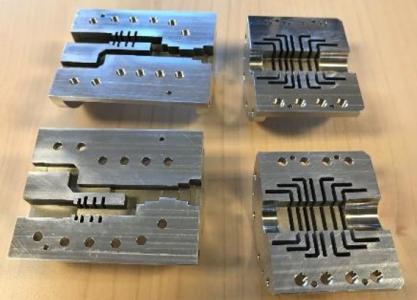Compact K/Ka-band antenna feed for multi-beam satellite communications

Objective(s):
The goal of this project has been the design, manufacturing and testing, a compact K/Ka-band two-port feed breadboard for optimum electrical performance with a simple and compact geometry. A novel feed has been explored, composed of four elements: diplexer, single-mode waveguide, bi-phase polarizer and horn antenna. It presents the advantages of wide-band, low axial ratio, high isolation, compactness and modular design.
Background and justification:
Next satellite systems operate in the 18.2-20.2 GHz and 28-30 GHz bands, with very stringent mechanical constraints, especially the footprint dimension. In these systems, the prior solution for user-type feeds was based on a dual-band ortho-mode transducer plus polarizer, which requires better bandwidth and axial ratio. Another solution, typically bulky and cumbersome, is to use a feed chain based on six-port junctions with matched loads at the two non-used ports. This project has addressed a different alternative based on bi-phase polarizers.
Achievements and status:
a) The design of the antenna feed has involved three components shown in the figure:
b) The design has led to a breadboard feed manufactured in Aluminum in two parts for the bi-phase polarizer and the diplexer.
c) Finally, the breadboard feed has been tested in both S-parameters and radiation. Return loss and isolation was close to the simulations. More discrepancies were obtained for the cross-polar, which is much more sensitive to geometrical tolerances.
Benefits:
This configuration provides great compactness with enhanced electrical characteristics: bandwidth, return loss, axial ratio, and isolation. The proposed antenna feed, unlike other alternatives, does not need a careful alignment between some of its components, thereby providing great versatility to the antenna structure, which can be used to reduce their size and complexity. Nevertheless, in this activity a more classic inline configuration has been used, minimizing the length and the transversal envelope.
